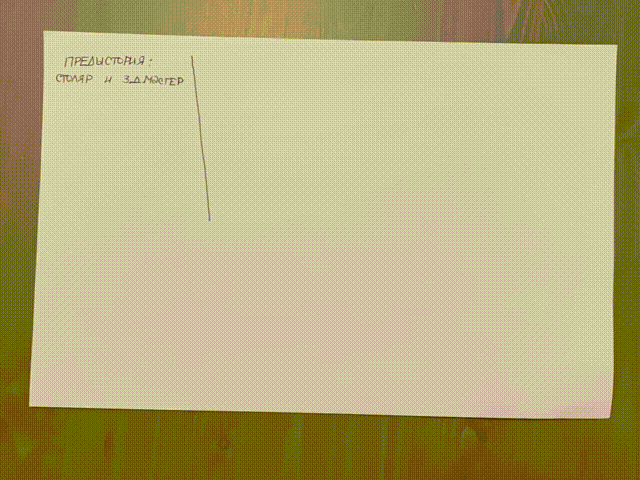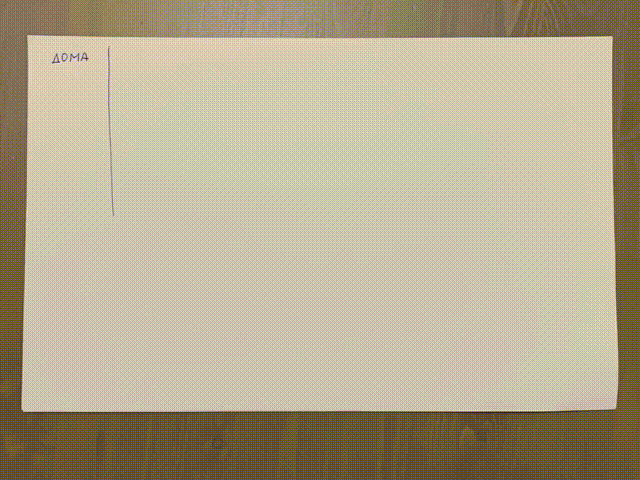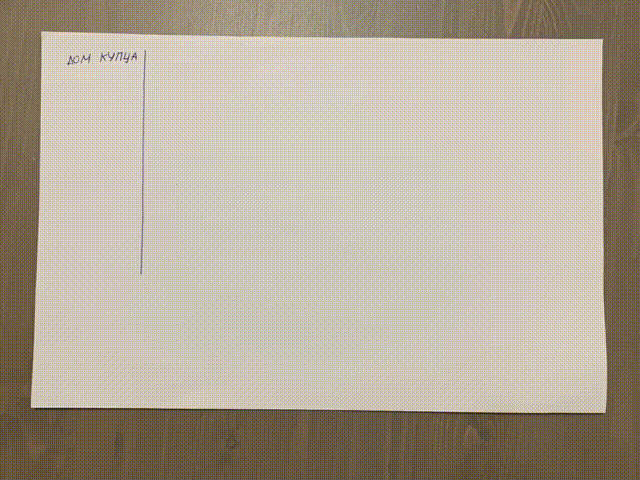Warning! 2 (paragraph added after reading comments received during the day after publication): In this post, I am not calling for taking away childhood from children and wasting it on complex and unnecessary exercises. The game that I propose is a natural way for a child to develop through reading and communication, I just propose to organize this communication in a certain format. If for you board games for children or attempts to challenge a child to a dialogue after reading a book together (or in general - reading a book together) seems strange and unnecessary, then do not read this post - except for bewilderment and negativity, it will not cause anything in you.
What is project thinking, why is it for children and what does children's fairy tales have to do with it?
If you start answering the first question, then the answer to the second will come by itself.
I like this definition for design thinking: it is the ability to define a goal and steps to achieve it, taking into account the existing circumstances and resources , a skill that is relevant at any age, starting from the age of 6. (The limitation of 6 years is due to the peculiarities of the development of the human brain - before this age the child still lacks volitional regulation and the ability to plan.)
After all, if you think so, almost our entire life is a series of large and small projects: organizing a trip, making repairs, planning a family budget for a month ... Even going to the grocery store can be imagined as a project. And for a child this is also relevant - just in childhood, the tasks are somewhat different. And so I propose to start teaching project thinking as soon as the brain is "ripe" for this. Today I will tell you about a game based on fairy tales: we will develop the child's project thinking skill with the help of the most accessible “exercise book” - a book of fairy tales.
How to play
Folk tales are a collection of a wide variety of life situations, in which we will, together with the child, hone the skill of project thinking. Hence this “exercise book”: we will consider each of the tales as a separate exercise in project management.
The game process can be structured in different ways, here I mostly describe the sequence of the basic steps and give instructions on how to make and use the playing field.
For the game, you will need a fairy tale, a sheet of paper (will serve as a playing field), a pen / pencil, colored sticker-bookmarks (we will use instead of playing chips). The essence of the game is reduced to a simple sequence of steps:
- Together with the child we read a fairy tale corresponding to the child's age.
I. We systematize the information: - ( , ) , – .
- (1 – ) ( ).
: - ( ), .
- , , , (, , - ..), . .
II. : - : , . , :
, ?
?
() ?
( : ?)
? ?
, , , .
III. : - , .
- If the goal at this stage has been achieved or at this stage the goal cannot be achieved and a transition to the next stage is required, we transfer our improvised chips to the next stage and repeat all steps in the next stage. So we play until the end of the tale or until the goal of the protagonist is achieved.
An example of a playing field for the fairy tale "Wooden Eagle":

Nuances of the game
Sometimes the heroes have no goals either in the first or even in the second stage (they just list the events), then we just record all the information about the stage and go with the characters to the next stage (re-stick the stickers in the next column, transfer the cards / figures). When there is a goal, do not stop after the child has determined it - provoke the child into discussion: together with the child, make sure that the goal is chosen correctly, ask why, as the child thinks, the character chose this particular goal, etc. It is helpful to question the validity of a goal in a fairy tale. (For example, in the fairy tale by H. H. Andersen "The Swineherd" the protagonist himself is disappointed in his initial goal and at the end of the tale abandons it.)
In some tales, you can choose a character for whom you can "play".
Variant of the playing field for the fairy tale "Prophetic Dream":

The first two stages are just a story, the characters do not have goals, although in the process of discussion the child can suggest them himself. But at the stage “At Elena's” you can play for Elena, especially since her attempts to achieve the goal in the plot were unsuccessful - perhaps the child will be able to offer a better solution.
Some goals are a real riddle of logic, as, for example, in the fairy tale “The Wonderful Shirt”: after the Serpent Gorynych killed Ivan the merchant's son, he put on his magic shirt (“and the one who wears this shirt, no one can can"). And although Ivan was later revived, he could no longer appear in the courtyard of the Serpent Gorynych, while this shirt was on the Serpent Gorynych - he had to figure out a way to take off his shirt, having on his hands a ring that the one who would put it on into a horse transforms.
An example of a playing field for the fairy tale "Wonderful Shirt":

Why do you need division into stages
The plots of most fairy tales are completely unpredictable: it is almost impossible to guess what will happen next, what new tasks the main character will face. And this is why fairy tales are so good for training a child's fantasy and analytical skills: a fairy tale constantly throws up new circumstances, and the child needs to analyze how to achieve the original goal, taking into account the changed circumstances.
But on the other hand, how to plan your steps if you know that everything will change in the next paragraph and your plan will lose its meaning?
Therefore, in order for the child to concentrate on the set goal and current circumstances, I propose to divide the tale into stages.
In this context, a stage is a segment of the narrative that describes certain circumstances in which the hero solves specific problems. And if the whole events in a fairy tale do not lend themselves to planning, then within the framework of one stage it is quite comfortable to come up with steps to achieve the goal. Another issue is that the resources available within the stage may not be enough, and then you can move on to the next stage.
It also happens the other way around: in the course of the discussion it turns out that at the current stage there are all the tools to achieve the final goal, but according to the plot, the main character does not seem to notice this. So, in the tale about Jack and beans, when at the beginning of the tale the question arises, how to feed themselves, the main characters - Jack and his mother - come up with a sensible idea to sell a cow and organize a shop with the proceeds. But at the moment when Jack stole a bag of gold from the cannibal, for some reason he and his mother prefer to just eat it up, and then visit the cannibal again to steal something else from him.
In the fairy tale "The Tale of Apples and Living Water" the prince goes to drink instead of returning home when he has all the possibilities for this (along the way, he gathers all the drunks from the neighborhood with him and hangs with them for 3 years).
By the way, this is a good moment to explain to the child what optimization is: we achieved the goal at this stage, and the rest of the actions could simply not have been performed.
A few words in conclusion
A natural question arises: why invent something if everything is already described in the fairy tale?
First, as mentioned above, this is an excellent exercise for training system thinking: in the process of playing, the child learns to extract the necessary data from the entire flow of information (this is the part where we suggest the child to place goals, circumstances and tools on the playing field) ...
We develop critical thinking: a child does not just read a fairy tale, he learns to evaluate the information that is offered to him, ask questions and offer the best solution. He analyzes how the described circumstances affect the heroes, what tools can be used to solve specific problems. It's also a great way to develop your imagination.
Above, I compare this game to an exercise, and as with any exercise, the effect of the game will only be after a lot of repetition. Just try to take a collection of fairy tales and “play” them all.
However, there are also such fairy tales for which such a game does not make sense - for example, the fairy tale "The Flying Ship" (not to be confused with the cartoon): there is nothing to think about in this fairy tale - all the solutions are already there (although this fairy tale can be used as an exercise “Find a match”: which guy can be used to perform which royal task). Therefore, I recommend that adults read the tale in advance and divide it into stages.
An adult's ability to ask the right questions is very important. Questions in this game are the main tool of an adult, it is the questions that push the child to analyze, come up with something new, and draw conclusions.
Below I offer a rough list of questions.
Circumstances:
How can the hero use his current circumstances?
Is there something that is stopping him? What can you do about it?
Tools:
How can you use this tool besides the method suggested in the tale?
Maybe it can be exchanged for something more suitable? Sell?
What can replace it?
What could we have done if it weren't for him?
What other tool could be used in this situation?
Characters:
What does he want? (Analogue “What is his motivation?”)
What is he afraid of?
Is it possible to offer him something in return (for the antagonists)?
Why do you think he is good (evil)?
Can conflict be avoided? How? Would you like to avoid conflict?
General questions:
Do you think your version is better than the version in the fairy tale? Why?
Did you enjoy playing this game? What did you like? What didn't you like? (Answers to these questions will help organize the game in the most interesting way for the child)
What characters did you like? Why?
What conclusions can we draw?
This is not an exhaustive list of questions, in the course of the game others may arise, the main thing is not to forget to voice them.
About me
! , . , , . , , .